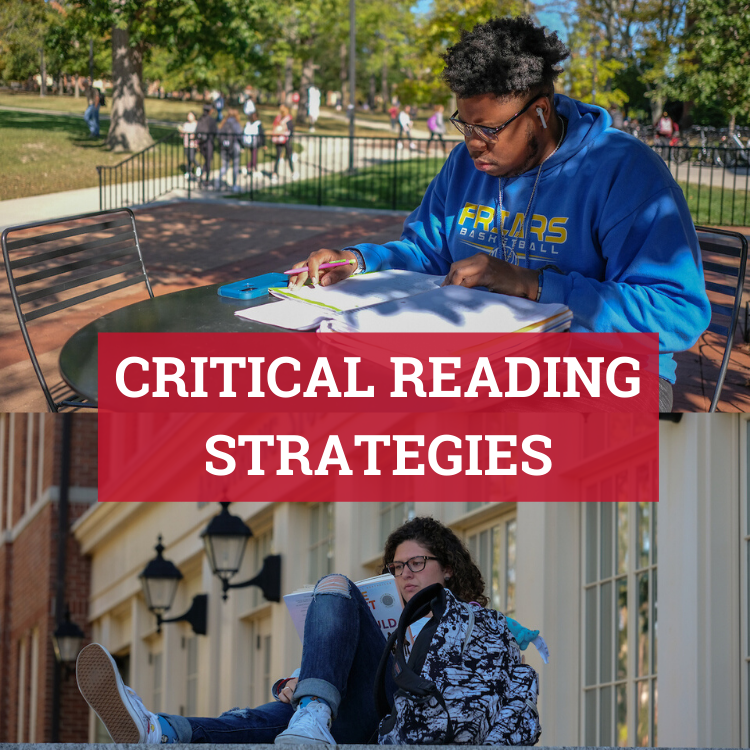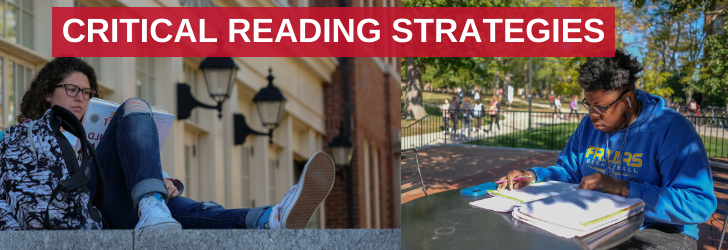Critical Reading Strategies


It’s no secret that many college courses require substantial reading – both the amount and the challenging nature of these readings can be a struggle for students. How do we help students streamline their reading practices in order to more efficiently glean important information? Consider these foundational strategies for Critical Reading from the Rinella Learning Center.
Identify the Type of Reading
It’s useful to start reading by thinking critically about the type of reading expected by the instructor – is it a textbook where information is presented sequentially? A scholarly research article? Determining the reading type influences the approach used. For textbooks and research articles in particular, reading word-by-word, line-by-line, is rarely a good use of time, because these texts are not generally intended to be read that way! Save that type of reading for fiction, such as plays or novels.
Pay Attention to Structure
Most academic types of reading have a structure that can be followed. Research articles often have abstracts: brief summaries that outline the main argument of the article. Why not start by reading that? Textbooks will sometimes list keywords, major concepts, or have summaries at the end of chapters. Going deeper, one can even look for sub-headings, such as “Literature Review,” “Methods,” or “Results” – all of which can help better understand the researcher’s project and the scholarly argument being made.
Use Your “Rules of Notice”
When you read, you probably notice bold print. Or italics. Or underlining. We use visual markers within text to find important information – which is called “Rules of Notice.” We pay particular attention to anything that is visually distinct. This also applies to pictures, charts, names, dates and more. Often, readers’ attention will go automatically to these distinctive words or images. This is a good thing!
Skim Strategically
A word-by-word, line-by-line reading is not usually effective for most academic texts. Students often know they should try to skim, but are unsure how to do it. We recommend paying particular attention to topic sentences (usually the first sentence in a paragraph) and transition statements (often the last sentence in a paragraph) – reading these can provide students with the skeleton of the overall argument. Combine this approach with the “Rules of Notice,” and students will have plenty of material to skim for in the text.
Use the “Four Quadrants” Method
Students often treat reading like a marathon: their goal is completion. We recommend treating reading like a scavenger hunt, where the goal is to find important information. Students might keep notes using the “Four Quadrants” method: one section could be “Keywords,” including important names, dates, or jargon; another section could include really powerful or informative quotations. A third section might identify questions or concerns the student has during the reading, which could provide good “talking points” during a class discussion. Finally, we suggest writing a short 3-5 sentence summary of the reading. Is the student able to translate the main idea into their own words? The act of summarizing is a great way to test oneself on one’s knowledge and understanding of the text!

